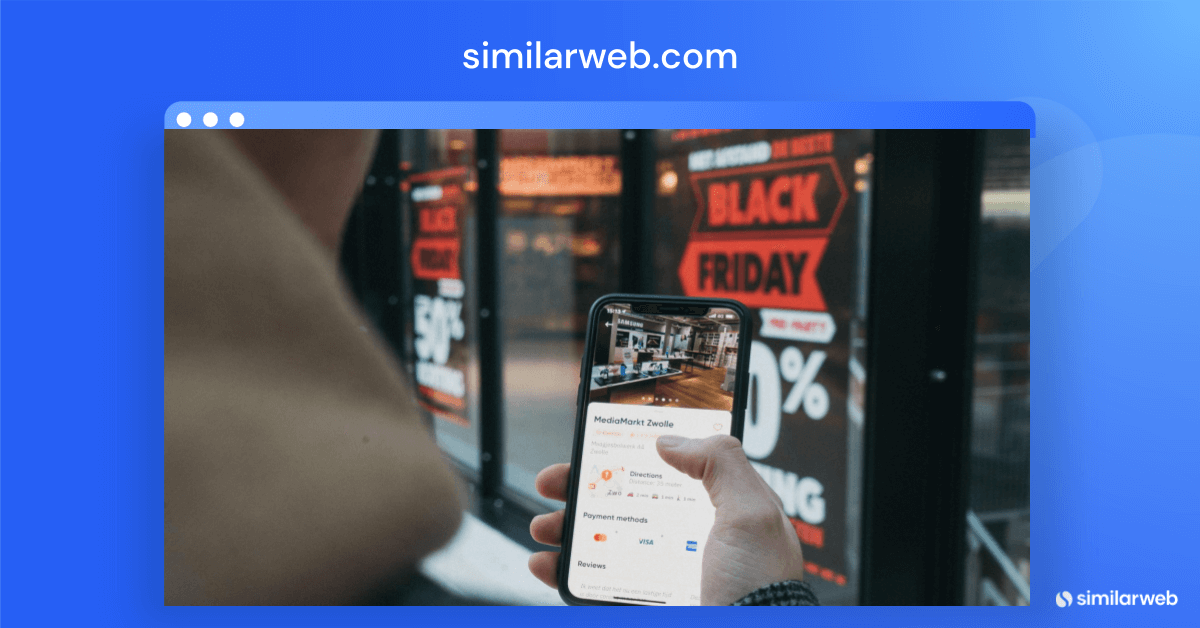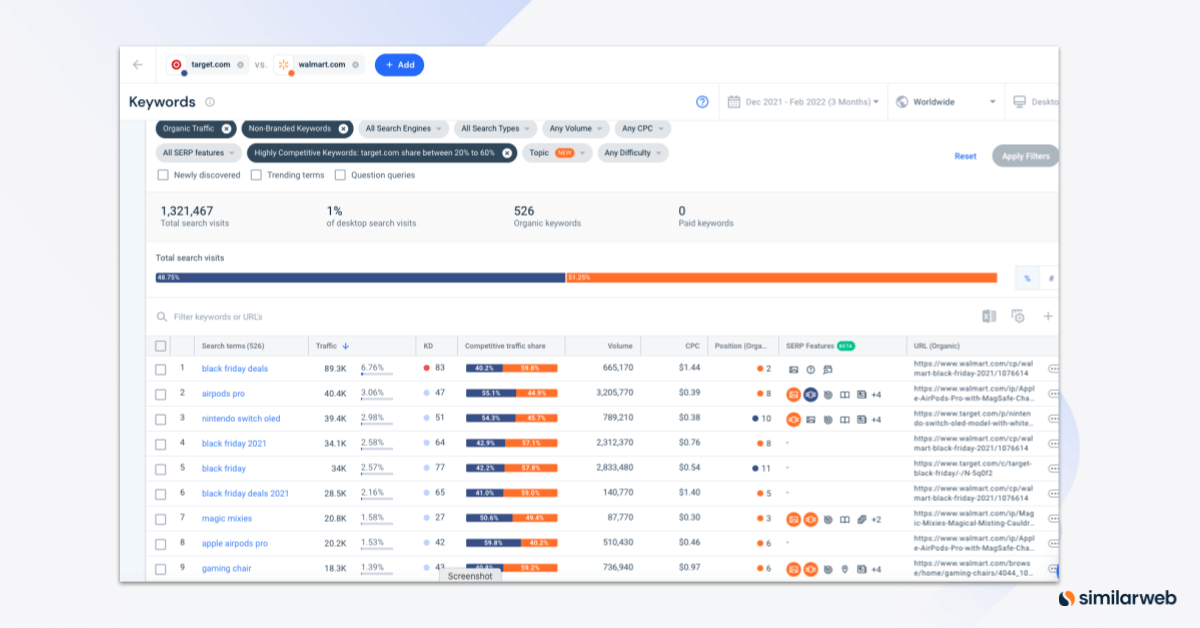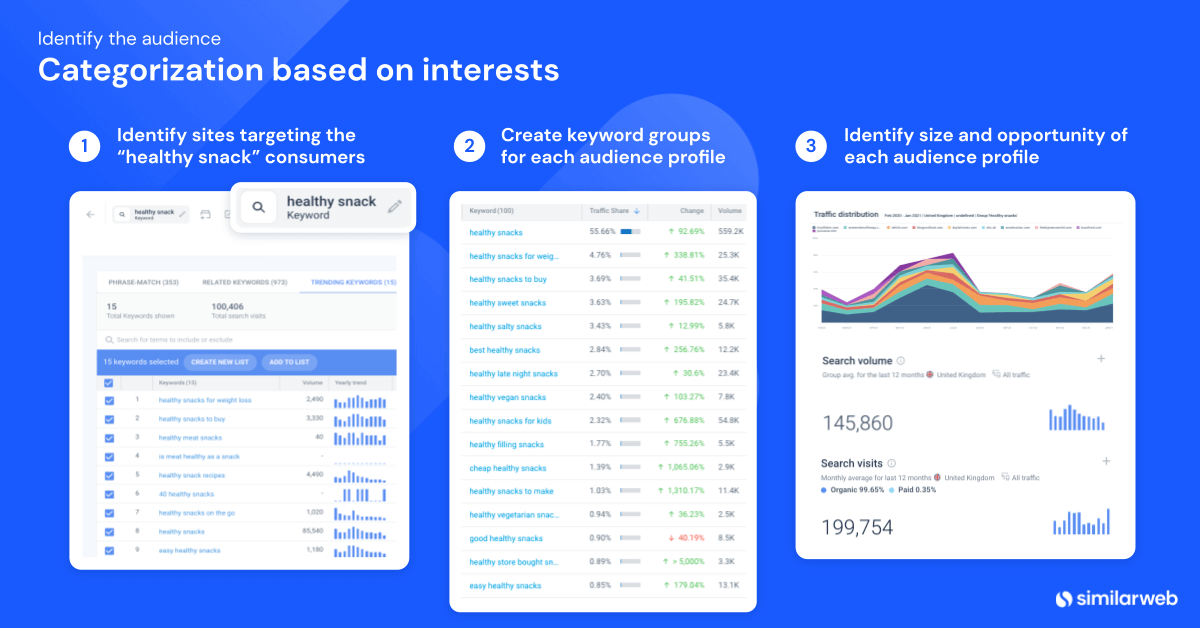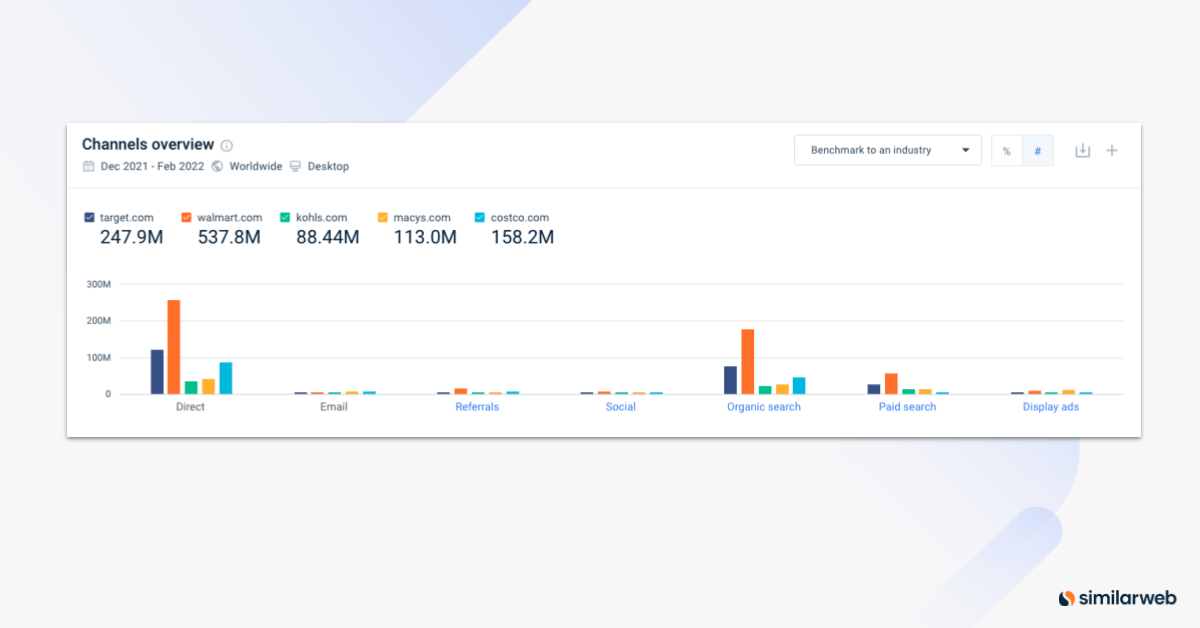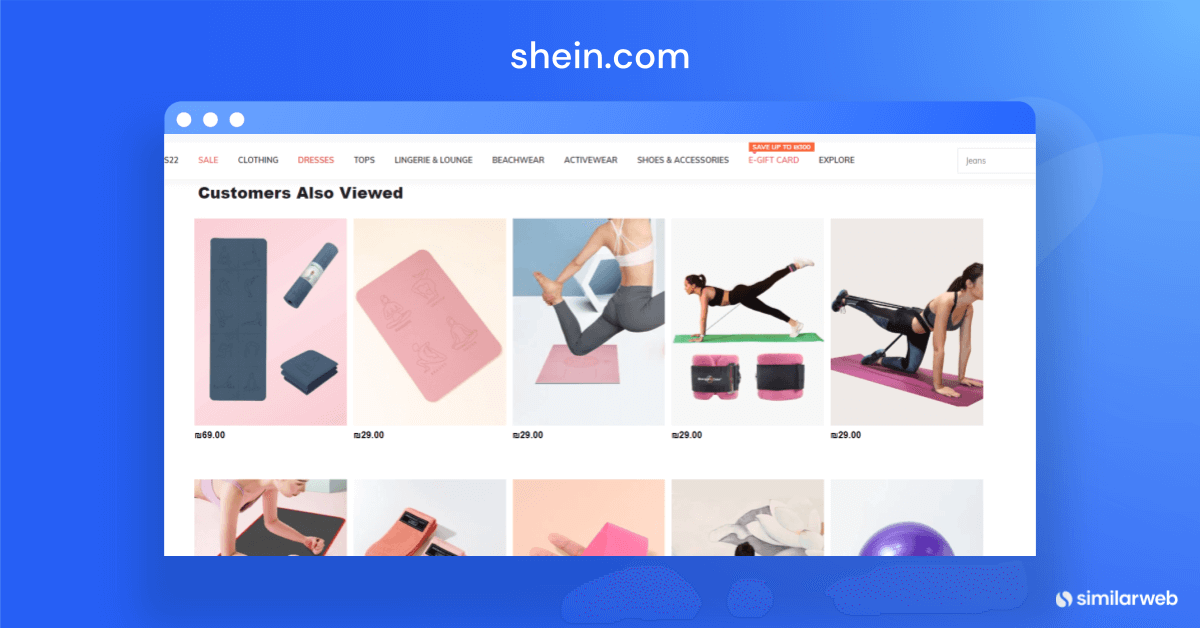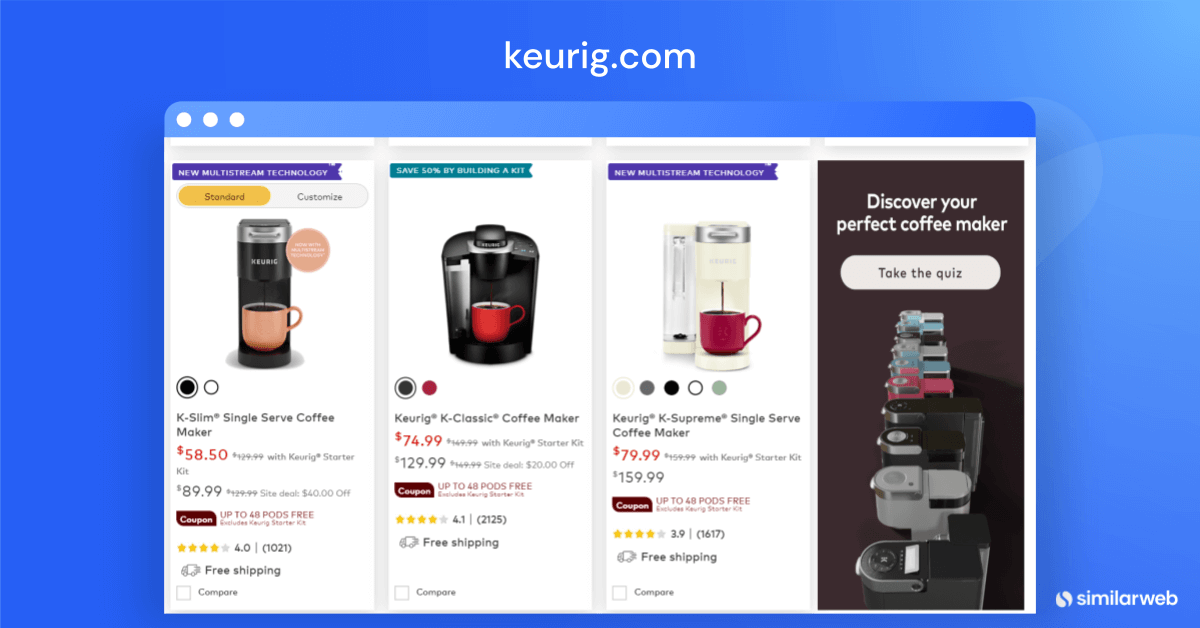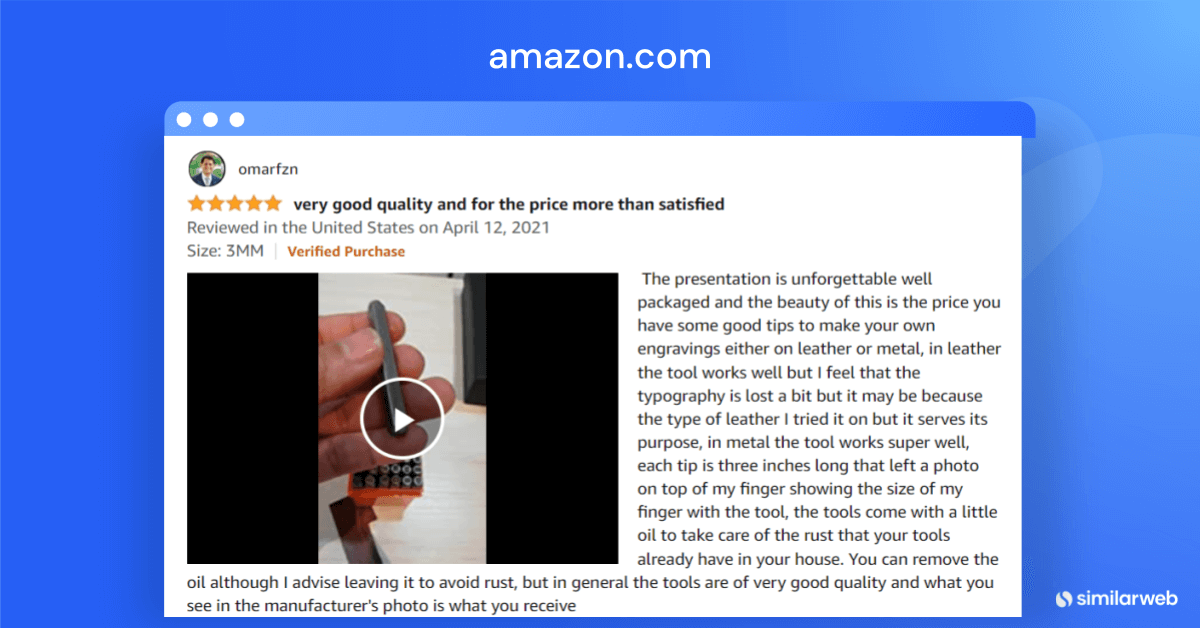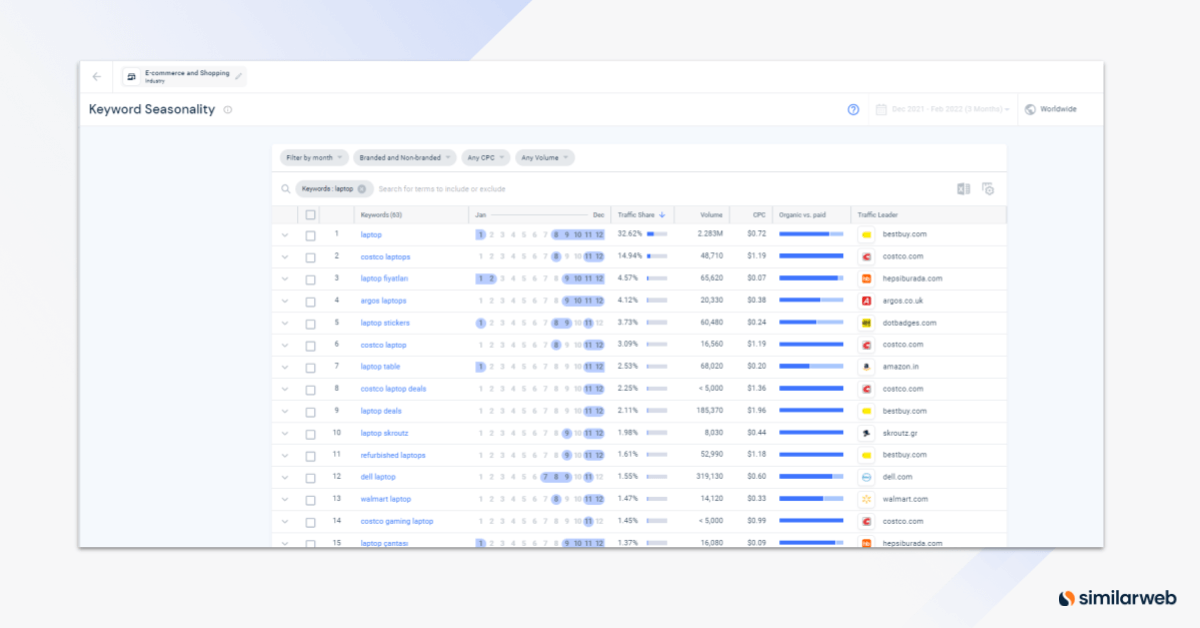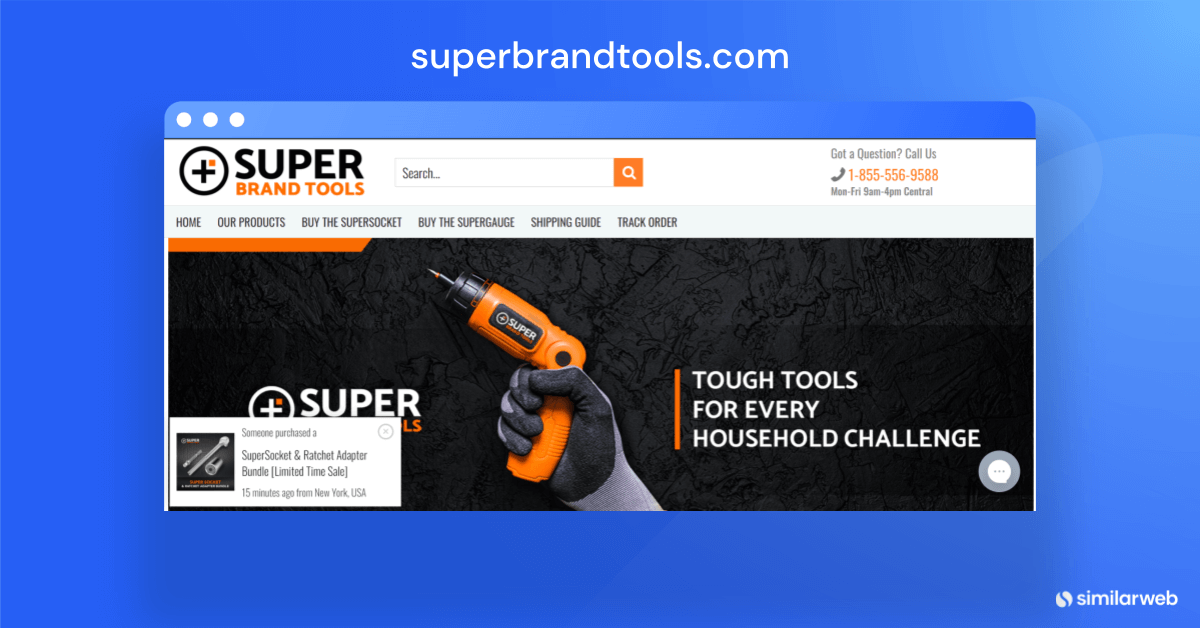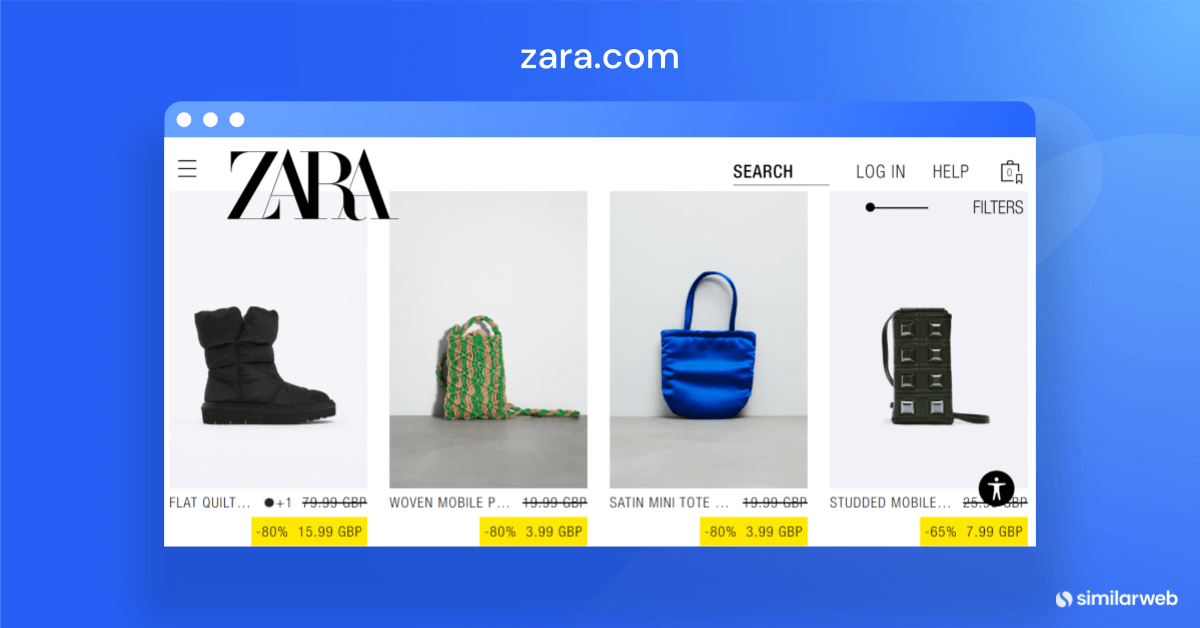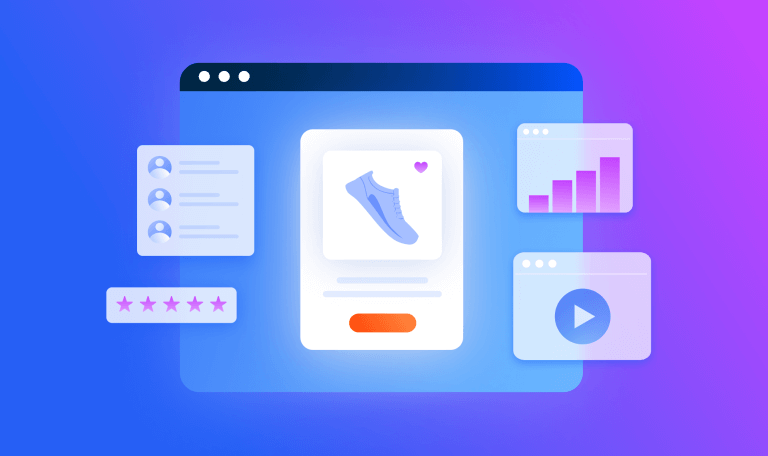Growth Hacking for eCommerce: 28 Tactics to Make It Big

Customers love collecting coupons and points for your rewards program. You get great reviews on your site, and all in all, your eCommerce business is growing nicely.
But that’s nothing special. There are countless other eCommerce sites like yours using the same tactics. So what are you missing to really make a breakthrough?
Honestly, we don’t know the exact answer to that, but we can suggest some pretty powerful eCommerce growth hacks to give your business the desired edge. So, take a few moments to understand the concept of growth hacking, pick the best hacks for your business, and watch it grow. Oh, and it’s OK. to have some fun with it – in fact, we encourage it.
What is growth hacking and why should eCommerce brands use it?
Growth hacking means analyzing digital data to fuel specific activities that drive growth. The goal is to identify weak spots and growth opportunities in the business operation and provide a fast, focused solution.
Growth hacks should supplement your overall growth strategy. They act like energy boosters to your marketing that can make the difference between snagging first or settling for second.
In eCommerce, that’s critical because competition is continuously growing – a trend that’s not likely to slow down any time soon. Big marketplaces like Amazon and Shopify dominate the landscape on one end, and large retail brands are closing in from the other end. In between, smaller brands and niche businesses are grappling for audience attention and market share – and they’re willing to use every trick in the book.
But tricks won’t get them far unless they’re based on data-backed performance and market analysis. eCommerce stores that want to grow in this crowded digital space need to get into their data and find real solutions for real issues.
Growth hacking goes beyond following popular influencer advice or sales hacks. It’s a holistic, data-centered approach that seeks opportunities to improve specific processes with creative ideas
How are growth hacking strategies applied to eCommerce?
Growth hacking looks at growth as a cross-functional effort involving marketing, research, and product. Some growth hackers apply a framework called AARRR. No, nothing to do with pirate talk or the emotional state of the growth hacker. The initials stand for:
- Acquisition
- Activation
- Retention
- Referral
- Revenue
SaaS marketers created the framework to fit the SaaS business model, but we can use it for eCommerce with a little variation. Some well-known eCommerce brands that successfully used growth hacking are Dollar Shave Club, Casper, and Gymshark.
Here’s the concept: Understand the steps that make up the customer journey and the features that move the visitor to take the next step, and then optimize. Be aware, the journey doesn’t end with purchase – you want to turn one-time buyers into regulars.
We can therefore speak about the customer life cycle instead of the more limited “buyer’s journey”. You need to keep customers moving and make sure they stay in the loop.
That’s why when you read through our list of growth hacks, you’ll notice many of them aim at multiple stages in the cycle.
But first…
To pick what’s right for your business, identify where activity slows in the stream. Where do customers get stuck or confused? Where can you add fuel to speed up their movement or add bait for new visitors?
If you’re not getting enough traffic to your site, there’s no point in investing in additional trust-building elements. If customers don’t return after their initial purchase, you should pick hacks that can increase engagement and loyalty first.
28+ growth hacks for eCommerce
Successful growth hacking involves experimenting. Choose what you think is best suited for your site and try different variations. Don’t be afraid to drop an idea after initial testing and then try something else. Make the testing part of the strategy. You’ll never know what works if you don’t test different options.
Growth hacks to expand reach and visibility
1. Competitive SEO
Of course, you do SEO, but don’t skip this one because it’s critical. The question is HOW you do it and how you can accomplish more with effective SEO research.
You need to know which keywords you compete against. Let’s say you chose a keyword for a specific product or product type. You optimize the entire product category for that search term only to realize afterward that your biggest competitor uses a different term to drive traffic, and they get a lot more.
If you’re just starting out or not getting the amount of traffic you think you could, do competitive keyword research and build a comprehensive SEO strategy.
2. Deep-dive into audience analysis
Knowing your audience helps you identify additional target groups. Discover niche audiences for specific products and websites they frequent. Which social media channels do they prefer, and where do they go to research products? Identify common audience characteristics and preferences that you can target.
3. Request social shares
Encouraging existing customers to share content enables you to reach their entire social network.
- Request social shares with the order confirmation. Add social share buttons to your order confirmation, and don’t be shy to offer a template for the post you request they share. It makes it easy. Customers love easy.
- Request social shares with order fulfillment. Send a follow-up email or notification after an order is delivered and request they share it on social media. To take it a step further and if you’re confident enough about your product and service, ask them to rate the experience and share.
- Some companies add a social share card in the shipment. Usually, the card is in the form of a picture frame with the brand name, and customers take a picture of the product, which they then post to their network.
4. Post content on relevant sites
Guest blogging is another way to reach a wider audience. It can be a beneficial extension if you have a content marketing strategy. Keep in mind that content creation requires a lot of effort and consistency. Be sure to weigh the effort against the outcome.
Growth hacks to generate traffic
The hacks in the first section also work to increase traffic, so we won’t repeat the same tactics.
5. Explore competitors’ channels
Investigate your competitors’ marketing strategies and learn what works for them. Find out which traffic channels drive the most valuable traffic to their sites. Compare the performance of these channels for your website and see where you can and should invest.
6. Fine-tune product descriptions for SEO
You’ve done your SEO analysis and benchmarked against the competition. For maximum traffic, apply eCommerce SEO best practices to your product pages. It starts with the product title, which should include the main keyword. Sprinkle secondary keywords in the description and related content.
7. Segment your audience according to demographics
Audience segmentation is a proven way to achieve more effective targeting. Demographic segmentation includes a minimum level of personalization of your communication. For example, a clothing store will promote men’s clothing only to male leads and women’s clothing only to female leads. You’ll get a better response rate and more visits to your site.
Growth hacks to encourage engagement
8. Segment the audience according to behavior
Adding behavioral factors to the segmentation can increase engagement. By analyzing audience behavior, you can make targeted offers when and where visitors are most likely to respond to them. Talk about direct-to-consumer!
9. A/B test different site elements
Sometimes a small change can make a big difference, like the position or the color of a CTA, or call-to-action. Play around with the design of your pages and test different design elements. This includes anything from image sizes, fonts, and colors, to where each element is located. Test the best way to display prices, discounts, customer reviews, etc. Make sure to A/B-test only one element at a time; otherwise, you won’t know what caused the change in performance.
10. Add recommendations
The best salespeople always offer something more: an alternative product, a tie to go with a shirt, or a cookbook to go with a food processor.
11. Communicate with the visitor
Chatbots are one way of initiating direct communication with the visitor. Even though it’s not human, the fact that potential customers can ask questions and get an instant response adds tremendous value. Other direct communication tools include chatting apps or platforms.
12. Add interactive content
Here’s where you can get creative. Offer contests, raffles, or quizzes to let your audience win something. Make sure the giveaway is a popular item or something of value, and not merely a marketing gadget. Measure engagement and test different options to find what works best.
13. Use notifications
Pop-ups – no, not the annoying kind – are a proactive way of letting visitors know about things they might otherwise be looking for. Here are some types of pop-up notifications to get your audience more engaged:
- New product notifications. Based on their purchase and browsing history, notify visitors about relevant new products in a category they’re interested in.
- Back-in-stock notifications. Inform your visitors about products that are back in stock if they previously showed interest in the item or attempted to purchase it.
14. Encourage reviews
People are quick to criticize but need to be asked for praise. Make it easy on them by asking for feedback on something specific, like the response or delivery time, the professionalism of staff, etc. Try offering rewards for an accumulated number of reviews. TripAdvisor, for example, upgrades the account of members who frequently contribute reviews.
Growth hacks to build trust and credibility
15. Place trust signals strategically
Most ecommerce sites have trust badges and certificates they display somewhere on their site. Large, trusted brands can show them in the footer; it’s a formality. But less-known companies in remote locations need to show them off. Try placing trust elements in different places to make them visible when it matters. Add them to product pages, to the shopping cart, etc.
16. Provide background info
The same goes for information about you and your company. Don’t hide it on an About Us page that’s accessible only from the footer. Tack it to the top menu or make it a personal message from the manager on the homepage. Show that you’re human and give your visitors a glimpse of why you do what you do.
17. Professional content
Offer additional content on the site. Especially when your business operates in a niche market and focuses on a specific product type or category, people want to know that you’re a professional. Help them understand that you know the products you sell, their origin, quality, or functionality. This can be in the form of a blog, eBooks, guides, or infographics.
18. Blog
A blog is an excellent place to provide any type of additional info. You can post your own content or have others write it for you. A blog can also boost your SEO ranking because you can use keywords to drive traffic and get backlinks from respectable sites.
19. Feature user-generated content
Testimonials and product reviews are probably the most significant trust elevator. A contemplating visitor will believe another customer before they believe the seller. Here’s the catch – every eCommerce site uses them already. So you might need to try something a little more engaging. Amazon product reviews, for example, include photos of the purchased product or even video reviews.
Growth hacks to increase sales
Increasing revenue is the ultimate goal, and all eCommerce growth hacks should eventually lead to more or higher value sales. These next hacks are directly aimed at it.
20. Cross-sell
Offer additional products to existing customers. Analyze which items people frequently view in one visit or buy subsequently. This goes beyond the standard recommendations. You can use follow-up emails after order completion or notifications based on behavioral analysis.
21. Up-sell
Offer ways to upgrade the account. Show the benefits of registering to the site or paying a membership fee. This can be a rewards program, like Amazon’s Subscribe & Save, free shipping, giveaways, etc.
22. Re-sell
There are many ways to turn a potential sale into a sale and then another sale.
- Use retargeting campaigns to reduce the number of runaway prospects.
- Send abandoned-cart notifications and emails to close more sales.
- Send friendly reminders or buy-again emails to customers who buy an item that requires refill, renewal, or can be upgraded.
23. Seasonal campaigns
You might think you know how seasons affect your sales or that they don’t impact your sales, but unless you analyze your website stats over time, you won’t actually know. Monitor traffic, engagement, and sales volume over the holidays and benchmark against the industry average. You may discover some golden nuggets.
Here’s a quick look at seasonal trends Similarweb reveals for the search “laptops”. This process can be replicated for any eCommerce product so you can see what real people are looking for (and when) and tailor your campaigns accordingly.
24. Try exit pop-ups
It’s the candy bar at the cash register in the supermarket. Just before leaving the store, give visitors one last chance to reconsider.
25. Create urgency
You may be familiar with the concept of FOMO – fear of missing out. This kicks in when undecided visitors realize they may not get the chance again.
- Low-stock notifications. When the stock of a product is running low, inform visitors to the product page about it.
- Show what others do in real-time. Simply witnessing others buying the product can create a sense of urgency or FOMO. You can display how many other visitors are currently viewing the product or have purchased the item.
c. Display a countdown. Coupons and other discount offers are time-limited. A backward counting clock or date display increases the urgency.
d. Calculate savings – show comparison. Consider displaying the average market price next to your offered price. Do this only if you can provide an accurate price.
When you offer a discount price, make sure to show the actual price so the viewer grasps the savings at a glance.
Growth hacks to cultivate loyalty
Don’t underestimate these hacks. Loyal customers form a more stable revenue stream than new customers. With a little extra attention, personalization, and consistency, you can turn frequent customers into the best advocates for your brand.
These three hacks are specific loyalty-builders:
26. Follow-up
Behavioral segmentation allows you to create email sequences to ensure your customers will continuously receive communication. You can add behavioral triggers to identify when a customer hasn’t visited in a long time, and then offer a special offer to keep them interested.
27. Get personal
For your top customers or high-potential customers, you may want to add extras, like birthday emails with benefits.
28. Reward loyalty
Politeness pays off. Say thank you for every order and piece of content a customer contributes. That’s a form of reward; it’s simple to implement, and it doesn’t cost anything. Loyalty programs are another type of reward. You may want to run a temporary campaign, like a raffle or contest if you recognize a loyalty issue.
Getting started with eCommerce growth hacking
Online shopping is all about providing the best user experience. You’ll measure the performance metrics on the back end with the front end always in mind. Let’s look at some of the critical factors to pay attention to in your research.
Page speed, smooth navigation, ease of use, and engaging content translate into the user experience. Monitor engagement on various sections of your site and identify which pages get the least visits, where people don’t spend time, and from where they exit. Keep a close eye on the bounce rate. Unusual data behavior is often an indication that something is wrong.
Check pages and funnel stages for simplicity and clarity. Visitors want to search, click, and type as little as possible. They don’t come to your site to be challenged – they expect to get something – and if that involves effort, they’ll go to a competitor who makes it easy.
Analyze the content on best and worst-performing pages. The content on your site replaces the sales reps in the store and needs to gently lead the prospect toward closing the sale. This requires clarity, persuasiveness, and respect for the customer. Your content should make the visitor feel comfortable and confident that they can trust you and the products you offer.
Benchmark everything against the best-in-class companies most similar to yours. You want to improve in areas where you lag behind the competition and strengthen areas where you lead. When analyzing the competition, you can also identify trends in consumer behavior and make sure to keep pace.
Growth isn’t magic – it’s a strategy
Is there a growth hack that got you particularly excited? Remember, before you implement it, analyze and benchmark your site performance to make sure it’s not aimed at something that already works exceptionally well. To leverage the full potential of the growth hacks, analyze your website and app data first.
You need to pinpoint the precise steps in the customer cycle that need improvement or have growth potential. Try strategies aimed at achieving the specific goal, then monitor results, experiment, and keep optimizing.
With Similarweb you can evaluate your performance against the industry, benchmark against the average or specific competitors, detect trends in consumer behavior, and custom-build your strategy.
Similarweb Shopper intelligence lets you compare purchase frequency and analyze cross-shopping. You can use industry and competitor data to identify weaknesses and growth opportunities and optimize your products for marketplace on-site search.
Finally, analyze your market environment and implement the growth hacks that can give your eCommerce business the boost it needs.
FAQ
What is growth hacking?
Growth hacking is a marketing strategy that focuses on rapid experimentation and testing to find the most effective ways to grow a business. It often involves using creative and unconventional tactics to acquire and retain customers.
How can growth hacking be applied to eCommerce?
Growth hacking can be applied to eCommerce in a variety of ways, such as optimizing website design, leveraging social media and influencer marketing, offering promotions and discounts, and improving the customer experience.
What are some examples of growth hacking tactics for eCommerce?
Examples of growth hacking tactics for eCommerce include offering referral discounts to customers who refer new customers, using gamification to engage customers and drive sales, optimizing website design to improve conversion rates, and leveraging social media influencers to reach new audiences.
How can data analytics be used in growth hacking for eCommerce?
Data analytics can be used in growth hacking for eCommerce to measure and track the effectiveness of different tactics and strategies. By analyzing data on customer behavior, website traffic, and sales, eCommerce businesses can identify opportunities for growth and make data-driven decisions.
Can growth hacking be used by small eCommerce businesses?
Yes, growth hacking can be used by businesses of all sizes, including small eCommerce businesses. In fact, growth hacking can be particularly effective for small businesses that have limited resources, as it involves finding creative and cost-effective ways to grow the business.
The ultimate edge in marketplace intelligence
Put the full picture at your fingertips to drive product views and sales
